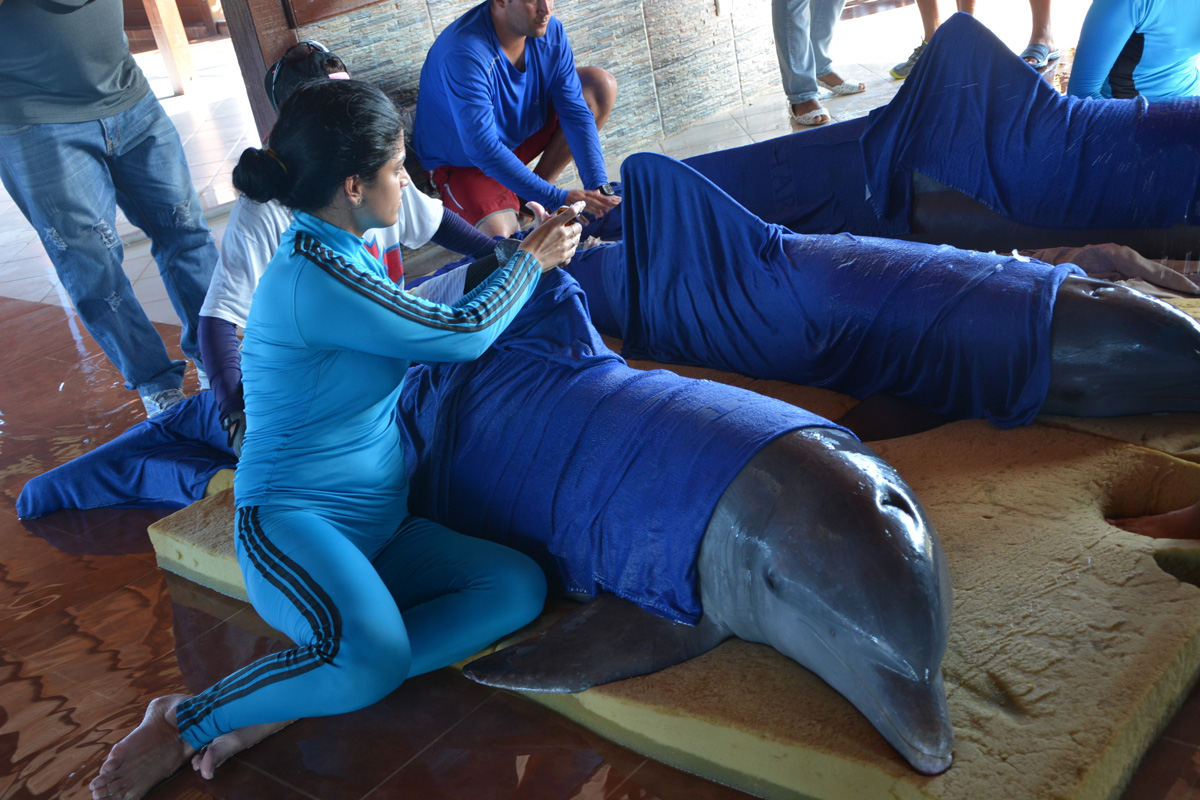Dolphins Evacuated by Helicopter in Cuba, Ahead of Hurricane Irma

On Sept. 7, in the hours before Hurricane Irma struck Cuba, workers raced against the clock to secure six dolphins housed at an island aquarium on the northern coast, preparing them for an airlift that would transport them to a safer location farther south.
Images shared on Facebook by the Cuban news outlet Agencia Cubana de Noticias (ACN) on Sept. 8 showed the dolphins swaddled in damp blue sheets and resting on mats, as blue-suited handlers readied them for evacuation by helicopter.
The animals lived in a dolphinarium — an aquarium for dolphins, with seminatural enclosures — located in Cayo Guillermo, an island in an archipelago along Cuba's northern coast that was directly in the path of Irma's approach. Those responsible for the dolphins determined that the animals would be safer elsewhere, and relocated them on Sept. 8 to a dolphinarium in Cienfuegos in south central Cuba, about 150 miles (240 kilometers) southeast of Havana, the Cuban news website September 5 reported. [Hurricane Irma: Everything You Need to Know About This Monster Storm]
A veterinarian and two trainers accompanied the dolphins on two helicopter flights that transported them to their temporary sanctuary, arriving respectively on Sept. 7 at 4 p.m. and 7 p.m. local time, María Luisa Hernández Vega, manager of the Cienfuegos facility, told September 5.
Once the dolphins were safely transported, they would be monitored closely for signs of stress from the move or from the change in habitat, Hernández Vega said.
By the time the hurricane struck Cuba on Friday (Sept. 8), more than 1 million people had evacuated areas of low elevation in central Cuba, the Miami Herald reported.
Hurricane Irma made landfall in Cayo Romano, Cuba, on Sept. 8 at 9 p.m. local time as a Category 5 storm, the first storm of that strength to hit Cuba since 1932. Waves from Irma topped a seawall in Havana, and the storm toppled trees and power lines, damaged homes and flooded city streets, according to the Miami Herald.
Sign up for the Live Science daily newsletter now
Get the world’s most fascinating discoveries delivered straight to your inbox.
Original article on Live Science.

Mindy Weisberger is an editor at Scholastic and a former Live Science channel editor and senior writer. She has reported on general science, covering climate change, paleontology, biology and space. Mindy studied film at Columbia University; prior to Live Science she produced, wrote and directed media for the American Museum of Natural History in New York City. Her videos about dinosaurs, astrophysics, biodiversity and evolution appear in museums and science centers worldwide, earning awards such as the CINE Golden Eagle and the Communicator Award of Excellence. Her writing has also appeared in Scientific American, The Washington Post and How It Works Magazine. Her book "Rise of the Zombie Bugs: The Surprising Science of Parasitic Mind Control" will be published in spring 2025 by Johns Hopkins University Press.









